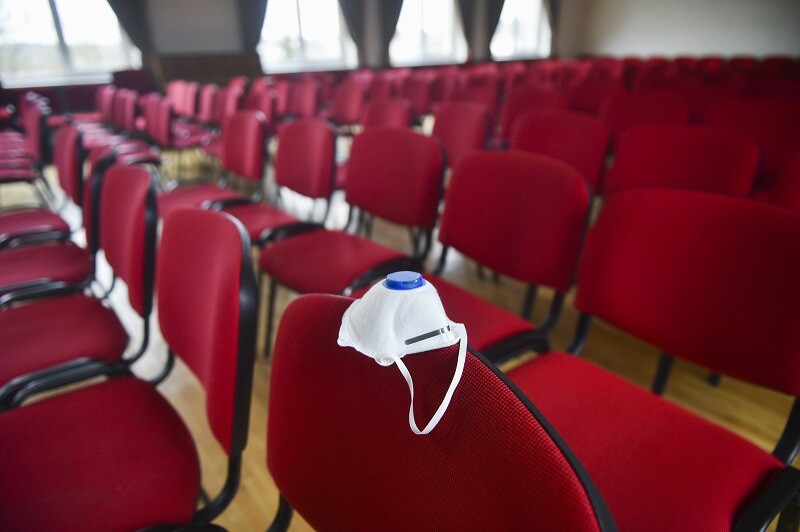Disrupting Facial Recognition Technology with Matthew Owen
Disruption Interruption podcast host and veteran communications disruptor KJ Helms interviews Facial Recognition Technology guru Matthew Owen, who explains how this technology can be very useful beyond the confines of surveillance. That myth, he notes, is slowing down useful applications of this tool.
(Tampa Bay, Florida) May 9, 2022—In the movies, the tech expert runs a program in a crowd looking for a specific suspect. On practically every TV cop show, there will be a scene where the cops use a city’s camera system to look for a suspect. Today, Face ID unlocks your phone, gives you access to apps and more. Fantasy meet reality. Facial recognition technology has come a long way and has become a $5-billion-a-year industry, expected to more than double to $12.6 billion in a scant six years.(1) In layman’s terms, facial recognition technology (FRT) uses biometric identification points in a person’s face to establish identity. Its application ranges from surveillance to marketing.(2) However, FRT is disrupting the industry as a precautionary measure for touchless interaction given the vagaries of COVID-19.
Enter Matthew Owen, a problem-solving fractional Chief Technology Officer (CTO), who sat down with Karla Jo Helms, host of the Disruption/Interruption podcast, to discuss how FRT, although quite a controversial topic, can be very useful.
“When people hear facial recognition, they usually think of invasion of privacy, don’t they? But it goes beyond that. This technology can be used to gain entry to a sporting event, a boarding gate at the airport, and so much more,” says Helms.
A point with which Owen agrees. FRT, he notes, can help solve entry problems. For example, 60,000 people trying to enter a stadium for a concert or a football game, in which a small army of personnel is helping them enter. Inevitably, there will be a bottleneck. Then add COVID to the mix and it becomes even more challenging. But, implementing an FRT-based express access will not only speed up entry but allow touchless access as well.
Matthew Owen explains:
The main ingredient for disruption is extreme customer focus, taking into account the customer experience and their journey. Paying particular attention to Twitter is helpful as a major feedback tool. Customers can voice their opinion and experience about your product and services.
Facial recognition technology is controversial, but when used correctly, it can be incredibly useful. Change is constant and with COVID regulations easing, consumers are confused by overlapping rules thrown out by authorities. Each event has its own set of rules and regulations, which makes it even more challenging for fans and employees alike.
The best tool the FRT industry has is user education as it plays a pivotal role in making this technology scalable. However, the problem with educating the masses is that they are desensitized to marketing emails and have a short attention span.
The future of FRT is going to be ubiquitous, inevitable and can be deployed at every location for the good of the customer. Yet, it is highly important to establish a proper protocol with multiple layers of screening and judgment to ensure peace of mind and public safety.
“The technology can be used for good or evil, just like any other technology we’ve invited as mankind. It’s incredibly useful if used correctly, there are things you can only do using facial recognition, like scanning a crowd of 66,000 people and picking out 3 people who shouldn’t be there,” says Owen.
The 3 Main Challenges of FRT
Regulatory Environment—The challenge with this technology in the US is regulation. Being a country governed by laws, privacy advocates for consumers make it difficult to navigate around these laws to ensure the technology works in favor of the consumers.
The Myths—Part of the challenge FRT faces are the myths surrounding privacy and security. Consumers really don’t care as long as it is convenient and saves them from hassle. The real impediment is educating the end users and making them aware of such technology and its uses.
Budgeting—This is the biggest challenge of them all. Who pays for the tech? Because it’s a cross-functional technology, getting all departments to agree poses a greater challenge and that’s where the process is slowed down.
Disruption Interruption is the podcast where you’ll hear from today’s biggest Industry Disruptors. Learn what motivated them to bring about change and how they overcome opposition to adoption.
Disruption Interruption can be listened to via the Podbean app and is available on Apple's App Store and Google Play.
About Disruption Interruption:
Disruption is happening on an unprecedented scale, impacting all manner of industries— MedTech, Finance, IT, eCommerce, shipping and logistics, and more—and COVID has moved their timelines up a full decade or more. But WHO are these disruptors and when did they say, “THAT’S IT! I’VE HAD IT!”? Time to Disrupt and Interrupt with host Karla Jo “KJ” Helms, veteran communications disruptor. KJ interviews bad a**es who are disrupting their industries and altering economic networks that have become antiquated with an establishment resistant to progress. She delves into uncovering secrets from industry rebels and quiet revolutionaries that uncover common traits—and not-so-common—that are changing our economic markets… and lives. Visit the world’s key pioneers that persist to success, despite arrows in their backs at www.disruptioninterruption.com.
About Karla Jo Helms:
Karla Jo Helms is the Chief Evangelist and Anti-PR(TM) Strategist for JOTO PR Disruptors(TM).
Karla Jo learned firsthand how unforgiving business can be when millions of dollars are on the line—and how the control of public opinion often determines whether one company is happily chosen, or another is brutally rejected. Being an alumnus of crisis management, Karla Jo has worked with litigation attorneys, private investigators, and the media to help restore companies of goodwill into the good graces of public opinion—Karla Jo operates on the ethic of getting it right the first time, not relying on second chances and doing what it takes to excel. Helms speaks globally on public relations, how the PR industry itself has lost its way and how, in the right hands, corporations can harness the power of Anti-PR to drive markets and impact market perception.
About Matthew Owen:
Matthew Owen has been solving problems as a Fractional Chief Technology Officer for 25-plus years. He is a Digital transformation leader, specifically with disruptive innovation of facial recognition. He is also a Twitter enthusiast, using it to ensure success at large scale events to gain valuable real-time consumer service feedback on new technology being implemented while it’s being experienced by the consumers. linkedin.com/in/mowenranger/
Sources:
Sava, Justina Alexandra; “Facial recognition market revenue worldwide 2028”; 4 Apr 2022; Statista; statista.com/statistics/1153970/worldwide-facial-recognition-revenue/#
Symanovich, Steve; “What is facial recognition? How facial recognition works?”; 20 Aug 2021; Norton; us.norton.com/internetsecurity-iot-how-facial-recognition-software-works.html
# # #
Media Inquiries:
Karla Jo Helms
JOTO PR™
727-777-4619
jotopr.com
You May Also Like
These Related Stories

#PRDisruption: What is Disruption?


No Comments Yet
Let us know what you think